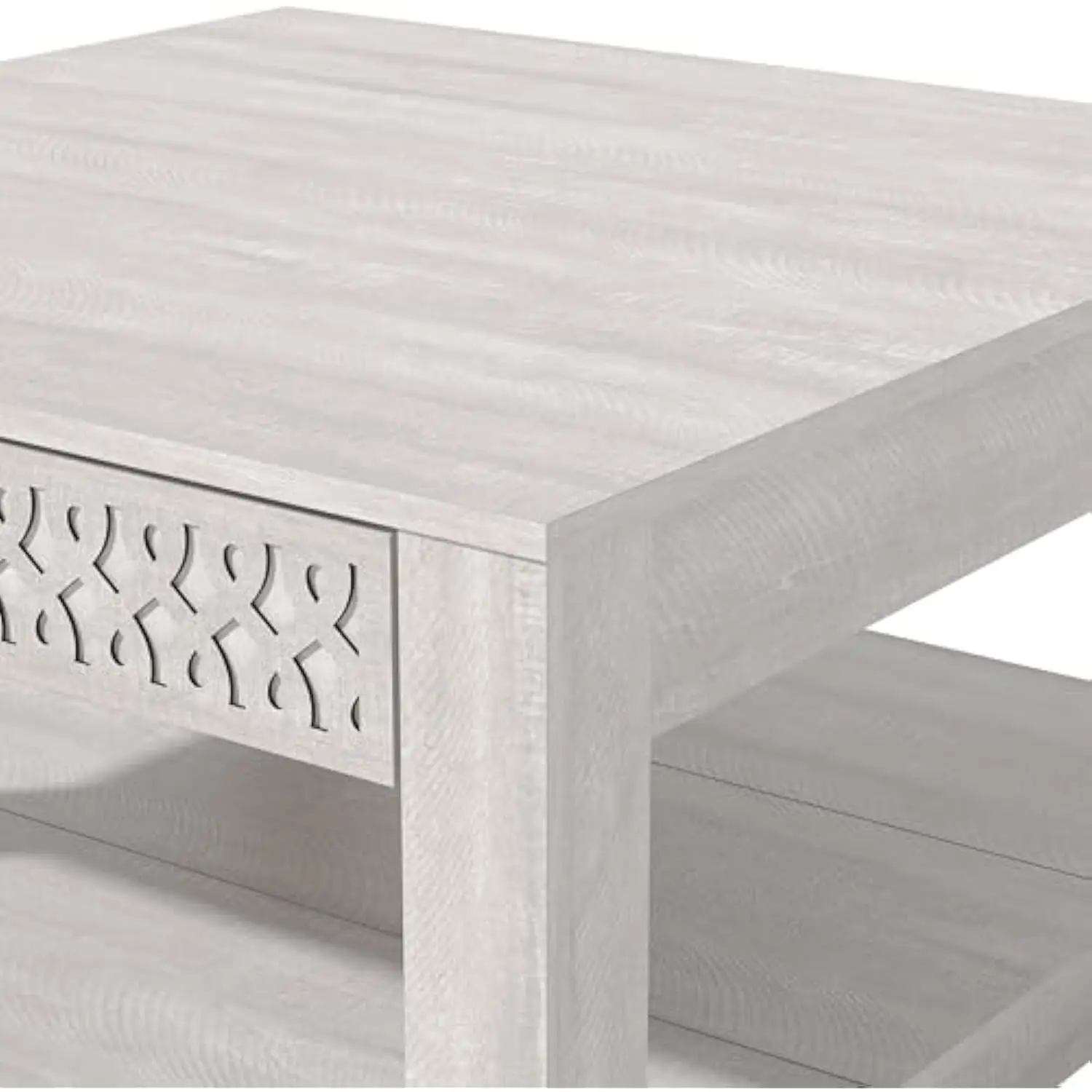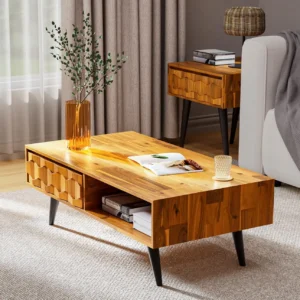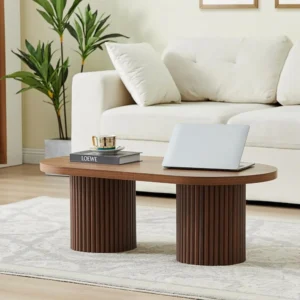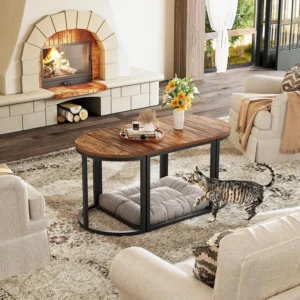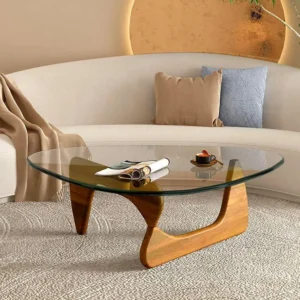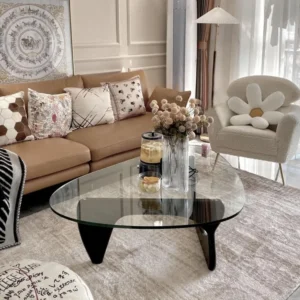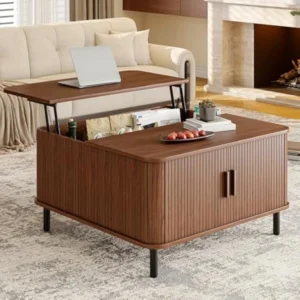Understanding the Value of Real Wood in Coffee Tables
When searching for the perfect coffee table, the material it’s made from significantly impacts its value, durability, and appearance. Real wood coffee tables represent not just furniture, but an investment in quality that enhances your living space for years to come.
The value of authentic wood coffee tables extends beyond mere functionality:
- Longevity: Real wood coffee tables typically last 15+ years with proper care, compared to just 5-7 years for engineered alternatives
- Character development: Unlike manufactured materials, genuine wood develops a beautiful patina over time, telling the story of your home
- Design versatility: Natural wood complements virtually any interior style, from contemporary to traditional
In mid-century modern design particularly, the honest use of materials is paramount. Intelligent black mid-century coffee tables showcase how authentic materials and thoughtful design work together to create functional art pieces that anchor your living space.
The investment in a quality mid-century modern solid wood coffee table pays dividends not just in durability but in the daily enjoyment of owning something beautiful, authentic, and well-crafted. Understanding how to identify real wood ensures you’re making a wise investment in a piece that will serve your home for generations.
What Exactly is “Real Wood”? Key Definitions
Before diving into identification techniques, let’s establish what constitutes “real wood” in furniture terms.
Solid Wood
Solid wood refers to pieces cut directly from a tree trunk or branch. These pieces maintain the natural characteristics of the tree throughout their entire thickness. No composites, glues, or layering are involved in creating the wood itself (though they may be used in construction).
Hardwoods vs. Softwoods
Hardwoods come from deciduous trees (those that lose their leaves annually) and generally feature:
* Denser, heavier composition
* More varied and distinct grain patterns
* Greater durability and resistance to wear
Common hardwoods in quality coffee tables include oak, maple, walnut, and cherry. Each brings unique color, grain patterns, and character to furniture.
Softwoods come from coniferous trees (evergreens) and typically have:
* Lighter weight
* Less pronounced grain patterns
* Higher susceptibility to denting and scratching
Pine and cedar are common softwood examples, though they’re less frequently used in premium coffee tables.
The distinctions between hardwood vs. softwood coffee tables extend beyond just durability to impact everything from weight to texture and aging characteristics.
Engineered Wood Alternatives
In contrast to solid wood, engineered alternatives include:
* Plywood: Thin wood layers glued together with alternating grain directions
* MDF (Medium-Density Fiberboard): Compressed wood fibers bonded with adhesive
* Particleboard: Wood chips and sawdust bonded with adhesive
These alternatives provide the foundation for many furniture pieces that merely imitate the appearance of solid wood.
Visual Identification: Understanding Wood Grain Patterns
The unique grain pattern of wood is nature’s fingerprint—impossible to perfectly replicate in manufactured materials. Learning to recognize authentic grain patterns is your first tool in identifying real wood.
Natural Grain Characteristics
Real wood grain features:
* Irregularity and organic flow
* Variation in pattern density
* Unique, non-repeating patterns
* Consistent continuation across joints and edges
In solid wood pieces, the grain flows naturally across surfaces and edges. For example, if you look at a table leg, the grain should continue around the corner rather than abruptly change or end.
Wood Type Signatures
Different wood species display distinctive grain patterns:
* Oak showcases prominent, bold grain with noticeable growth rings
* Maple presents subtle, fine grain with occasional unique patterns like “bird’s eye”
* Cherry displays a smooth grain with small gum pockets and subtle color variations
* Walnut features rich, sometimes wavy grain patterns with color variations from chocolate to purple-black hues
Understanding the characteristics of different woods, as detailed in the ultimate guide to solid wood coffee tables, helps you verify if the piece matches what the seller claims.
Natural Imperfections
Real wood celebrates imperfection:
* Knots where branches once grew
* Mineral streaks from substances absorbed during tree growth
* Subtle color variations throughout the piece
* Slight irregularities in texture
These “flaws” actually authenticate the natural origin of the wood and add character that mass-produced alternatives can’t genuinely replicate.
Essential Quick Checks: The 30-Second Wood Assessment
When you’re evaluating a coffee table and need a rapid assessment, these quick checks can provide immediate insights into whether you’re dealing with real wood:
Weight test: Lift one end of the table. Real wood, especially hardwood, feels substantial and solid—significantly heavier than particleboard or hollow alternatives.
Tap test: Gently knock on the surface. Solid wood produces a warm, muted sound, while engineered materials often sound hollow or flat.
Temperature check: Touch the surface. Real wood feels naturally warm, while laminates and veneers often feel cooler to the touch.
Edge examination: Look at any exposed edges. Real wood edges show consistent material throughout, while composite materials reveal layers, seams, or edge banding.
Underside inspection: Check less visible areas. Manufacturers often use cheaper materials on hidden surfaces, revealing the true construction.
These quick assessments align with techniques used when identifying Danish-inspired coffee tables and other quality furniture pieces, providing immediate clues about authenticity before deeper examination.
The Comprehensive Wood Test: Physical Properties
Beyond quick checks, understanding the physical properties of real wood helps you make a definitive assessment of material authenticity.
Weight and Density
Solid wood coffee tables have substantial heft. A small solid oak coffee table will weigh noticeably more than a similar-sized table made from particleboard or MDF. This density contributes to the furniture’s stability and durability.
The weight should feel evenly distributed and substantial. If parts of the furniture feel disproportionately light, it might indicate mixed materials.
Temperature and Tactile Response
Wood is a natural insulator that responds differently to touch than manufactured materials:
- Real wood quickly warms to your touch
- The surface has subtle texture variations, even when well-finished
- It never feels plasticky or artificially smooth like laminate surfaces
Run your hand across the surface—real wood provides a natural resistance and organic feel that engineered materials cannot replicate.
Acoustic Properties
The sound test reveals much about a table’s composition:
- Solid wood produces a deep, warm tone when tapped
- The sound dissipates quickly rather than resonating
- Different woods produce slightly different tones (denser woods like maple sound crisper than softer woods like pine)
This acoustic signature results from wood’s cellular structure and cannot be perfectly mimicked by composites.
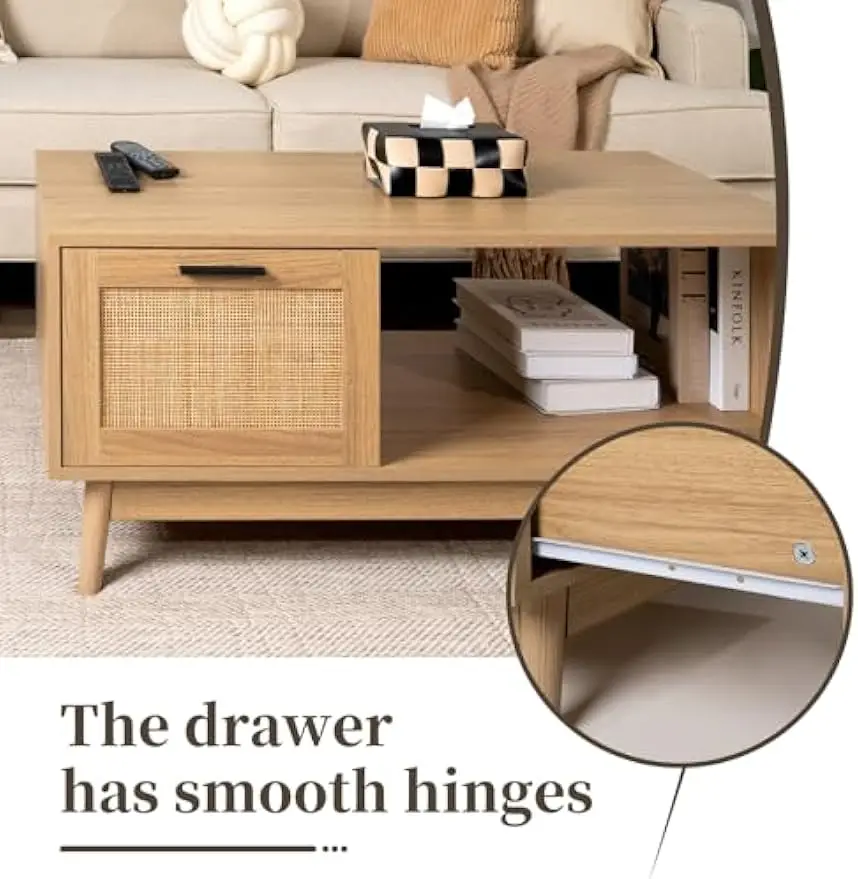
Examining Edges and Corners: The Decisive Indicators
The edges and corners of a coffee table often reveal the most telling evidence of its material composition. These areas are difficult to disguise and frequently expose the truth about construction quality.
Edge Examination Steps
- Look at table edges for any applied edge banding (thin strips of material covering the edge)
- Check for visible layers or seams that would indicate plywood or particleboard
- Examine how the grain flows from the surface over the edge
- Inspect corners for joining methods that indicate solid construction
What Real Wood Edges Show
In solid wood furniture:
* The grain pattern flows naturally around edges
* End grain (the exposed growth rings) may be visible on some edges
* Edges can be shaped, rounded, or beveled while maintaining material consistency
* No seams, layers, or different materials appear within the edge
Veneer vs. Solid Wood Edges
- Veneer edges often show a thin strip of wood (edge banding) applied to cover the substrate material
- Solid wood edges show consistent material throughout with no separate covering
- On veneer pieces, the edge banding may begin to peel or separate over time
- Corner joints on solid pieces show complementary wood grains meeting at the join
The quality of edge treatment is particularly notable in mid-century modern walnut coffee tables where the clean lines and exposed edges are central to the design aesthetic.
Table Construction Analysis: Joinery and Craftsmanship
The way a coffee table is assembled offers crucial evidence about its quality and material authenticity. Traditional woodworking joinery is both functional and beautiful, often signaling solid wood construction.
Quality Joinery Indicators
Premium solid wood furniture typically features:
- Dovetail joints: Interlocking “tails” and “pins” that create exceptionally strong connections, often seen in drawer construction
- Mortise and tenon joints: One piece (tenon) inserts into a cavity (mortise) in another piece, creating strong right-angle connections
- Dowel joints: Wooden pegs inserted into aligned holes, reinforcing connections
- Finger joints: Interlocking “fingers” of wood creating strong corner connections
These traditional joinery methods require solid wood to execute properly and indicate quality craftsmanship.
Modern vs. Traditional Construction
Even in contemporary pieces, quality indicators remain consistent:
* Corner blocks reinforce structural integrity
* Screws complement (rather than replace) quality joinery
* Minimal use of staples or visible fasteners
* Smooth drawer operation without sticking or wobbling
Understanding different popular solid wood coffee table styles helps you recognize the relationship between design era and construction techniques that indicate authenticity.
Craftsmanship Details
Look for these craftsmanship indicators:
* Symmetrical and consistent woodgrain matching
* Smooth, even finishes without bubbling or inconsistencies
* Precisely aligned joints with minimal gaps
* Attention to detail in less visible areas
These quality markers typically accompany real wood construction and reflect the care taken throughout the manufacturing process.
Hidden Areas Reveal the Truth: Underside Inspection
One of the most reliable ways to determine a coffee table’s true construction is to examine areas not meant to be prominently displayed. Manufacturers often economize on materials in these hidden areas, revealing the furniture’s actual composition.
What to Check Underneath
When examining the underside of a coffee table, look for:
- Consistent materials throughout (not just on visible surfaces)
- Unfinished wood that shows natural grain and color
- Structural supports made from the same wood as the visible portions
- Quality joinery continuing into hidden areas
- Lack of stickers claiming “real wood” (genuine pieces rarely need such labels)
Drawer Construction Clues
If your coffee table includes drawers, these provide excellent identification opportunities:
- Solid wood drawers typically feature dovetail or finger joints at corners
- The drawer bottom should be solid wood or quality plywood, not flimsy materials
- Drawer slides should operate smoothly, indicating precise construction
- Inside surfaces may be unfinished, revealing natural wood characteristics
Mid-century modern lift-top coffee tables often feature particularly revealing construction elements when the mechanism exposes normally hidden components.
Back Panel Assessment
If the table has any back panels or enclosed areas:
* Check if they use the same quality materials as visible areas
* Look for consistent construction techniques throughout
* Examine how panels are secured (quality pieces use proper joinery rather than just staples)
These hidden areas often tell the most honest story about the table’s construction quality and material authenticity.
Distinguishing Real Wood from Veneer: Expert Techniques
Wood veneer uses thin slices of real wood adhered to a substrate material like MDF or plywood. While veneer itself is genuine wood, it’s important to differentiate it from solid wood construction.
Understanding Veneer
Veneer consists of:
* Thin slices of real wood (typically 1/42” to 1/16” thick)
* Applied over a substrate core material
* Used primarily on flat surfaces
* Often selected for its attractive grain patterns
Quality veneer furniture can be valuable and beautiful, but it differs from solid wood in durability and repair potential.
Identification Methods
To distinguish veneer from solid wood:
- Examine edges for visible layers or separate edge banding
- Look for seams where veneer sheets meet (often appearing as straight lines)
- Check for perfectly book-matched patterns (mirror-image grain created by cutting adjacent veneer sheets)
- Inspect for any bubbling, lifting, or separation from the substrate
Quality Spectrum Considerations
Not all veneer applications are equal:
* Premium furniture may use thick, high-quality veneer over stable substrates
* Quality veneer work can last decades with proper care
* Poor-quality veneer may be paper-thin and prone to damage
* The substrate quality greatly impacts the furniture’s longevity
Understanding these distinctions helps you make informed decisions about value and quality without automatically dismissing veneer pieces.
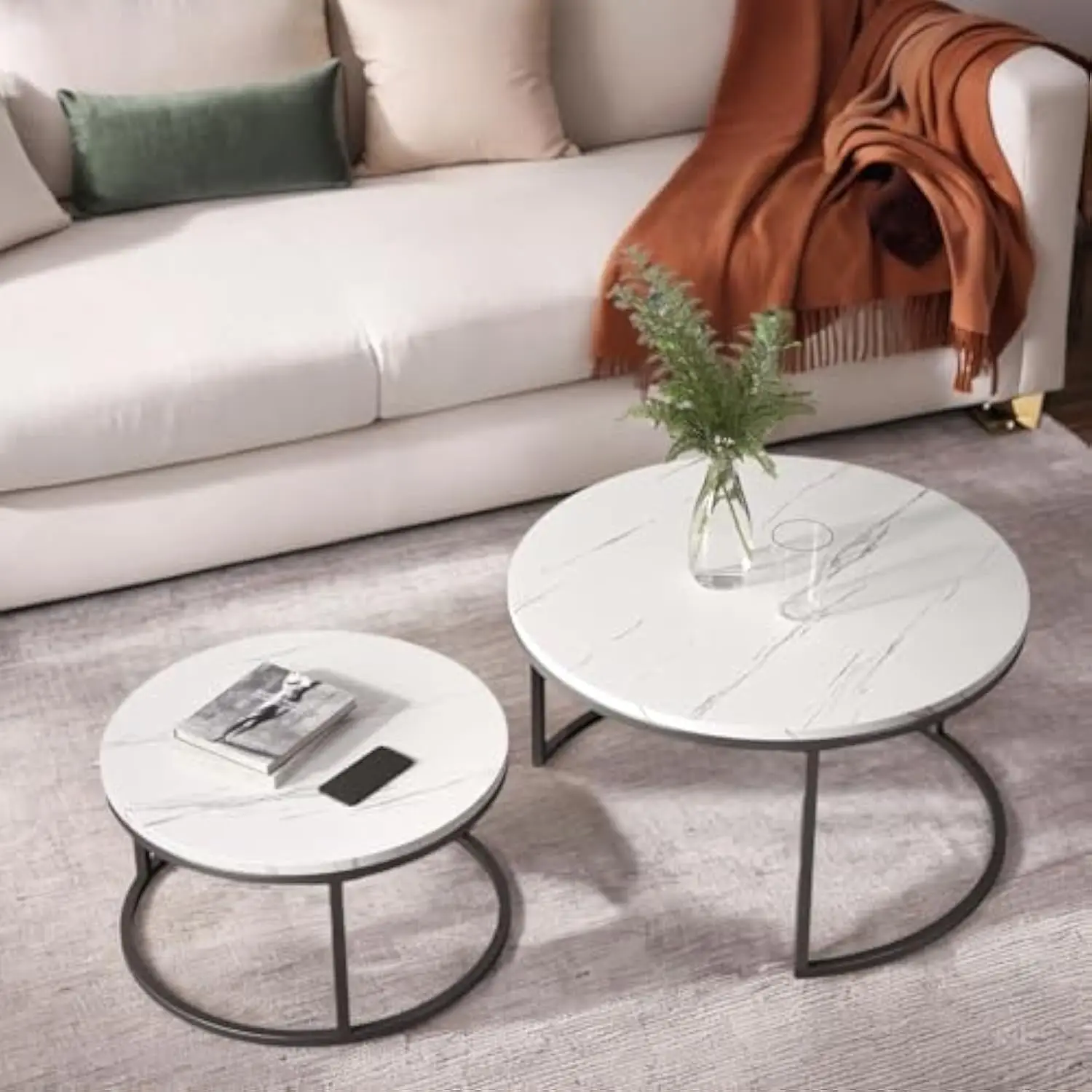
Identifying Laminate and Manufactured Wood Alternatives
Beyond veneer, several common alternatives to solid wood exist in the furniture market. Learning to identify these materials helps you make informed purchases.
Laminate Surfaces
Laminate consists of:
* Paper or plastic printed with wood-grain patterns
* Bonded to a substrate (typically particleboard or MDF)
* Sealed with a clear protective layer
Identification characteristics:
* Perfect pattern repetition across large areas
* Uniform appearance without natural variations
* Plastic-like feel that doesn’t warm to touch
* Visible seams where sections meet
* Often features perfectly uniform color and pattern
Medium-Density Fiberboard (MDF)
MDF characteristics include:
* Uniform, smooth edges without grain
* Consistent density throughout
* Typically heavier than solid wood of similar dimensions
* Absorbs moisture easily if exposed
* Often painted rather than stained
Particleboard
Particleboard indicators:
* Visible wood chips or particles in exposed edges
* Lower density than MDF
* More susceptible to damage from weight or pressure
* Fasteners may cause splitting or bulging
* Cannot be refinished or repaired effectively
Understanding these alternatives helps contextualize why black mid-century coffee table design relies on material quality to achieve its distinctive aesthetic impact.
The Expert’s Guide to Wood Types in Coffee Tables
Different wood species bring unique characteristics to coffee tables, affecting everything from appearance to durability. Learning to recognize common wood types enhances your ability to verify authenticity.
Oak
- Appearance: Prominent grain pattern with distinctive growth rings
- Color: Light tan to medium brown with reddish undertones
- Properties: Extremely durable, resistant to wear, heavy
- Identification: Look for distinctive flecking in quarter-sawn pieces and prominent grain
Walnut
- Appearance: Rich, sometimes wavy grain with occasional figure
- Color: Ranges from chocolate brown to purple-black with lighter sapwood
- Properties: Moderate hardness, excellent stability, medium weight
- Identification: Distinctive dark color, smooth texture, and occasional color variations
Cherry
- Appearance: Fine, straight grain with occasional curls
- Color: Reddish-brown that darkens significantly with age and exposure to light
- Properties: Moderately hard, polishes beautifully, medium weight
- Identification: Subtle grain, small gum pockets, distinctive darkening over time
Teak
- Appearance: Straight grain with oily feel due to natural oils
- Color: Golden to medium brown, aging to silver-gray if untreated
- Properties: Extremely weather-resistant, stable, moderately heavy
- Identification: Distinctive smell, oily feel, excellent weather resistance
For examples of this classic material in furniture, explore mid-century modern teak coffee tables which showcase its distinctive properties.
Maple
- Appearance: Subtle, fine grain with occasional unique patterns
- Color: Pale cream to light reddish-brown
- Properties: Very hard, resistant to wear, heavy
- Identification: Minimal visible grain, occasional “bird’s eye” or “tiger” figuring
Mid-Century Modern Solid Wood Coffee Tables, Mid-Century Modern Teak Coffee Tables
$879.95 Select options This product has multiple variants. The options may be chosen on the product pageMid-Century Modern Danish Coffee Tables, Mid-Century Modern Oval Coffee Tables, Mid-Century Modern Solid Wood Coffee Tables
$390.05 Select options This product has multiple variants. The options may be chosen on the product pageMid-Century Modern Coffee & End Table Sets, Mid-Century Modern Coffee Table Sets, Mid-Century Modern Oval Coffee Tables
Price range: $257.48 through $331.04 Select options This product has multiple variants. The options may be chosen on the product pageMid-Century Modern Glass Top Coffee Tables, Mid-Century Modern Glass Top Side & End Tables
$460.58 Select options This product has multiple variants. The options may be chosen on the product pageMid-Century Modern Glass Top Coffee Tables, Mid-Century Modern Vintage Coffee Tables, Mid-Century Modern Vintage Side & End Tables
$725.36 Select options This product has multiple variants. The options may be chosen on the product pageMid-Century Modern Lift Top Coffee Tables, Mid-Century Modern Square Coffee Tables
$454.73 Select options This product has multiple variants. The options may be chosen on the product page
Red Flags and Warning Signs: When It’s Not Authentic Wood
When evaluating coffee tables, certain warning signs strongly suggest you’re not looking at authentic solid wood construction:
- Perfect uniformity in grain patterns across large areas
- Repeating patterns that show identical “knots” or features in multiple locations
- Perfectly straight grain without any natural variation
- Unnaturally perfect color without subtle variations
- Extremely light weight relative to the table’s size
- Hollow sound when tapped or knocked
- Visible particle composition on edges or damaged areas
- Plastic-like feel that doesn’t warm to the touch
- Printed wood patterns that look two-dimensional
- Unusually low price point for claimed wood type and construction
Additionally, be cautious of:
* Marketing that uses terms like “wood finish” or “wood look” rather than specifying solid wood
* Furniture that requires complete assembly (quality solid wood pieces typically come partially assembled)
* Surfaces that feel artificially smooth without natural wood texture
Understanding these warning signs helps inform decisions when styling black mid-century coffee tables or other furniture pieces where material authenticity impacts both aesthetics and longevity.
How Material Choice Affects Maintenance and Longevity
The materials used in your coffee table directly impact how you’ll maintain it and how long it will last in your home.
Maintenance Requirements
Solid Wood:
* Requires occasional polishing or oiling (depending on finish)
* Can be refinished completely if damaged
* Shows scratches but can be repaired
* Develops character with age and use
Veneer:
* Requires careful cleaning to prevent moisture damage
* Cannot be sanded or refinished extensively
* Difficult to repair if damaged
* May bubble or separate over time
Laminate/Engineered Materials:
* Resistant to staining but cannot be repaired if damaged
* Cannot be refinished
* May chip or crack permanently
* Edges can peel or separate over time
Aging Characteristics
One of the most significant differences between materials is how they age:
- Solid wood develops a patina and character over time
- Quality hardwoods often look better with age and use
- Many wood species change color naturally (particularly cherry, which darkens)
- Engineered materials generally deteriorate rather than improve with age
Understanding these maintenance implications helps you anticipate the long-term relationship you’ll have with your furniture and the value of investing in quality materials from the beginning.
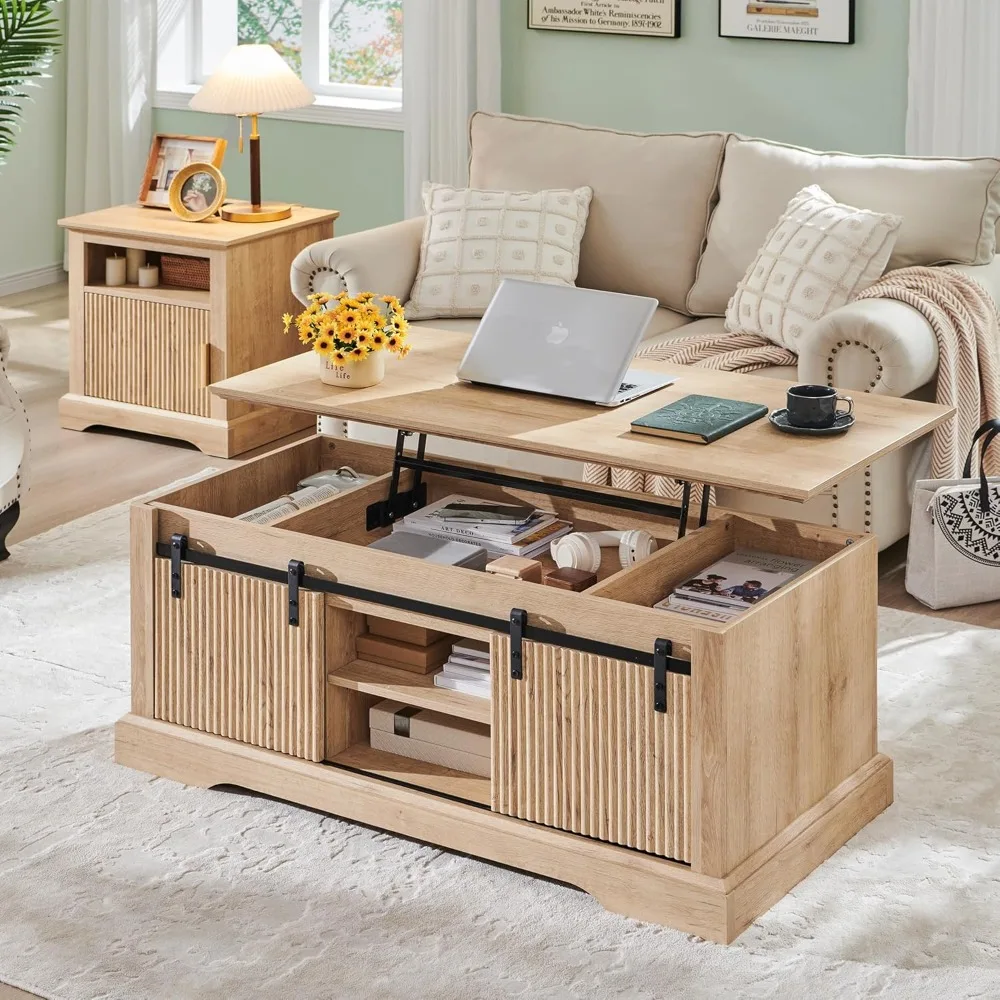
Common Questions About Wood Identification
Is veneer always lower quality than solid wood?
Not necessarily. Quality veneer on a stable substrate can create beautiful furniture that lasts decades. Premium furniture makers often use veneer for its ability to showcase spectacular grain patterns (like bird’s eye maple or burled walnut) that would be prohibitively expensive in solid form. The quality lies in the thickness of the veneer, the stability of the substrate, and the craftsmanship of application.
How can I tell if a “distressed” or “reclaimed” wood table is authentic?
Genuine distressed or reclaimed wood shows inconsistent aging patterns, varying colors, and authentic wear marks that aren’t perfectly distributed. Look for nail holes that penetrate deeply, irregular wear patterns, and natural color variations. Manufactured distressing typically looks too perfect, with identical “wear marks” repeated across surfaces.
Does wood type affect a table’s value significantly?
Absolutely. Different wood species vary dramatically in cost, with exotic hardwoods like walnut commanding premium prices compared to more common species like pine. However, construction quality often matters more than wood type alone—a well-crafted pine table may outlast a poorly made walnut one.
Can engineered woods ever be considered premium materials?
High-quality plywood (especially Baltic birch or marine-grade plywood) is used in premium furniture for its stability and strength. When used appropriately—such as for drawer bottoms or structural components—engineered woods complement solid wood construction. The key is appropriate application rather than substitution.
For more context on quality furniture options, explore our collection of mid-century modern coffee tables which demonstrate various material applications.
Applying Your Knowledge: Practical Shopping Advice
Now that you can identify real wood, here’s how to put that knowledge to work when shopping:
Questions to Ask Retailers
- “Is this solid wood throughout, or is it partially constructed with engineered materials?”
- “What specific wood species is this made from?”
- “How is the furniture joined or constructed?”
- “Can you show me any unfinished areas so I can see the natural wood?”
Evaluating Marketing Claims
Be aware that terminology can be misleading:
* “All wood” may include engineered wood products
* “Real wood” might refer only to veneers
* “Wood finish” typically describes appearance, not material
Price Considerations
Use these guidelines when evaluating prices:
* Solid hardwood furniture represents a significant investment
* Unusually low prices for claimed solid wood should raise concerns
* Different wood species command different price points
* Construction quality affects price as much as wood type
Physical Inspection Tips
When possible:
* Open drawers and look at their construction
* Feel the weight by lifting one end
* Examine less visible areas for material consistency
* Look at the underside and back surfaces
These practical approaches help you apply your wood identification skills when decorating with black mid-century coffee tables or any furniture purchase.
Why Authentic Materials Matter in Mid-Century Design
The mid-century modern design movement, which heavily influences contemporary furniture, placed particular emphasis on honest materials and transparent construction. This design philosophy viewed furniture not just as functional objects but as expressions of authenticity and integrity.
The core principles that make authentic materials essential include:
- Truth in materials: Mid-century designers believed materials should express their natural characteristics rather than imitate others
- Form follows function: The authentic properties of wood directly inform the designs that can be achieved
- Connection to craft: Using genuine materials honors the craftsmanship tradition central to quality furniture
- Longevity and sustainability: Real wood furniture is designed to last generations, not years
These principles explain why material identification skills are particularly valuable when selecting mid-century inspired pieces. The authentic use of materials isn’t merely about appearance but about honoring the design integrity that makes these pieces timeless.
Quality furniture made from genuine materials creates a different relationship with your living space—one where your coffee table becomes more than just a surface for drinks but a functional art piece that enhances daily life through both beauty and utility.
By learning to identify real wood, you’re connecting to a tradition of quality that extends beyond trends, ensuring the pieces you bring into your home will serve both their practical purpose and aesthetic function for years to come.

